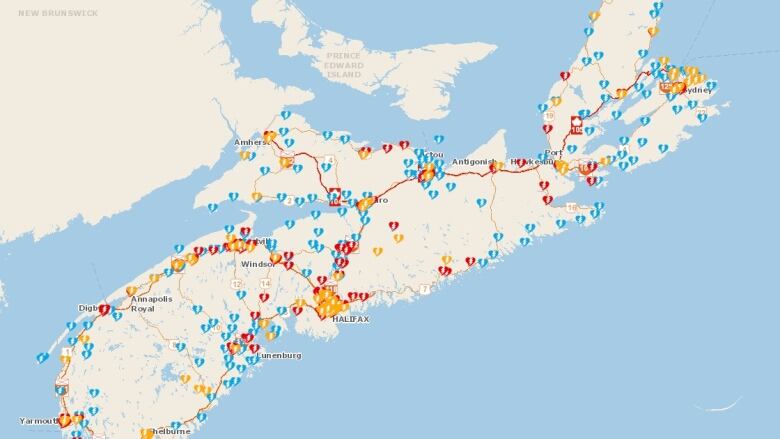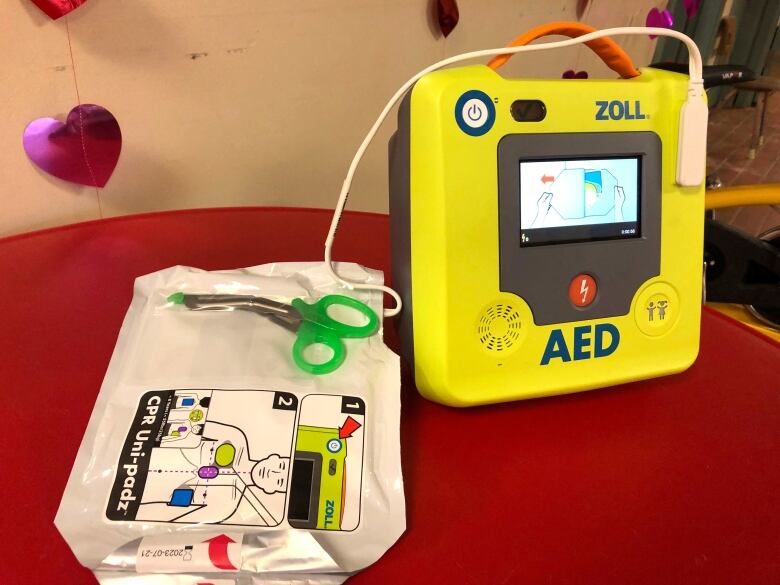Map makes it easier to find nearest defibrillator in Nova Scotia
There are 684 listed registered devices located in businesses and community organizations

People across Nova Scotia can now search an online map to see where to find automatic external defibrillators, or AEDs, in their communities.
Emergency Health Services has made publicthe locations of 684registered devices on its website.The map highlights first responders' defibrillators in blue and public defibrillators at businesses and community organizations in red and orange. People can see addresses where the portable devices are kept.
Used along with CPR, defibrillators are life-saving devices that shock a person's heart when it is quivering erratically.
When defibrillators are successful, the heart returns to a normal rhythm before a person's organs and brain begin to die.
Paramedic Mike Janczyszyn, who co-ordinates the provincial registry of automated external defibrillators,hopes people will use the map to familiarize themselves withdevicesnear their homes and workplaces

He said some of the devices listed are located in buildings that could be locked or won't always be accessible all the time.
It could depend on a business's hours. He advises people to look into specifics at different locations.
"Before you make it part of your emergency response plan, just check with them to see if it is accessible that you can actually get through access doors," he said.
The map is part of EHS'sefforts to increase awareness about defibrillators and the registry that tracks the devices.
"It's a piece of the puzzle in combination with calling 911 and doing high-quality CPR," he said.

The EHS site cautions the map isn't designed to be used if someone goes into cardiac arrest as there is no guarantee it's accurate. The site wasn't designed for mobile devices so it isn't entirely visible on phones.
EHS has been pledgingto provide an interactive map for nearly 18 months. It previously only publisheda static imageof defibrillatorlocations thatdidn't allow people to zoom in or see exactly where devices could be found.
Some defibrillators not shown
About 164 additional defibrillators are registered with the province but are not listed on the map since the owners did not authorize the addresses to be shared.
The new interactive map is part of EHS's efforts to improve access to defibrillators. The province has installed new software that will eventually allow emergency dispatchers todirect callers in cases of cardiac arrest to an AED if one isnear their location.
It is still being tested but when it starts running, an alert will pop up in EHS's communications centre when there's a defibrillator within 1,200 metres of a cardiac arrest. Similar programs have been running for years in other parts of Canada.
In the fall of 2017, CBCmapped locations ofAEDsin Nova Scotia after obtainingthe locations through a freedom of information request. Since then, the province has nearly tripled the number of devices on its registry.
MORE TOP STORIES












_(720p).jpg)


 OFFICIAL HD MUSIC VIDEO.jpg)
.jpg)



























































































